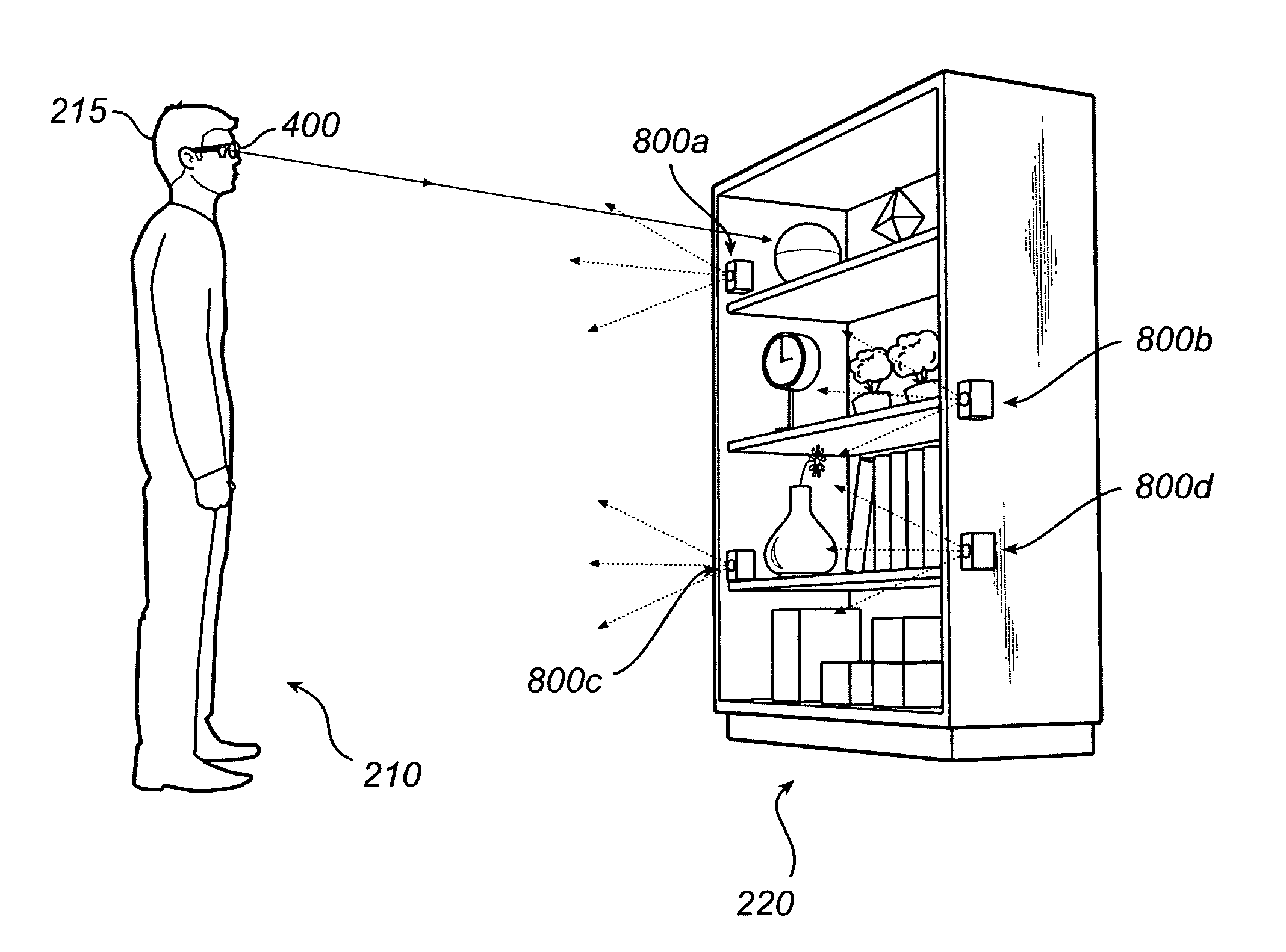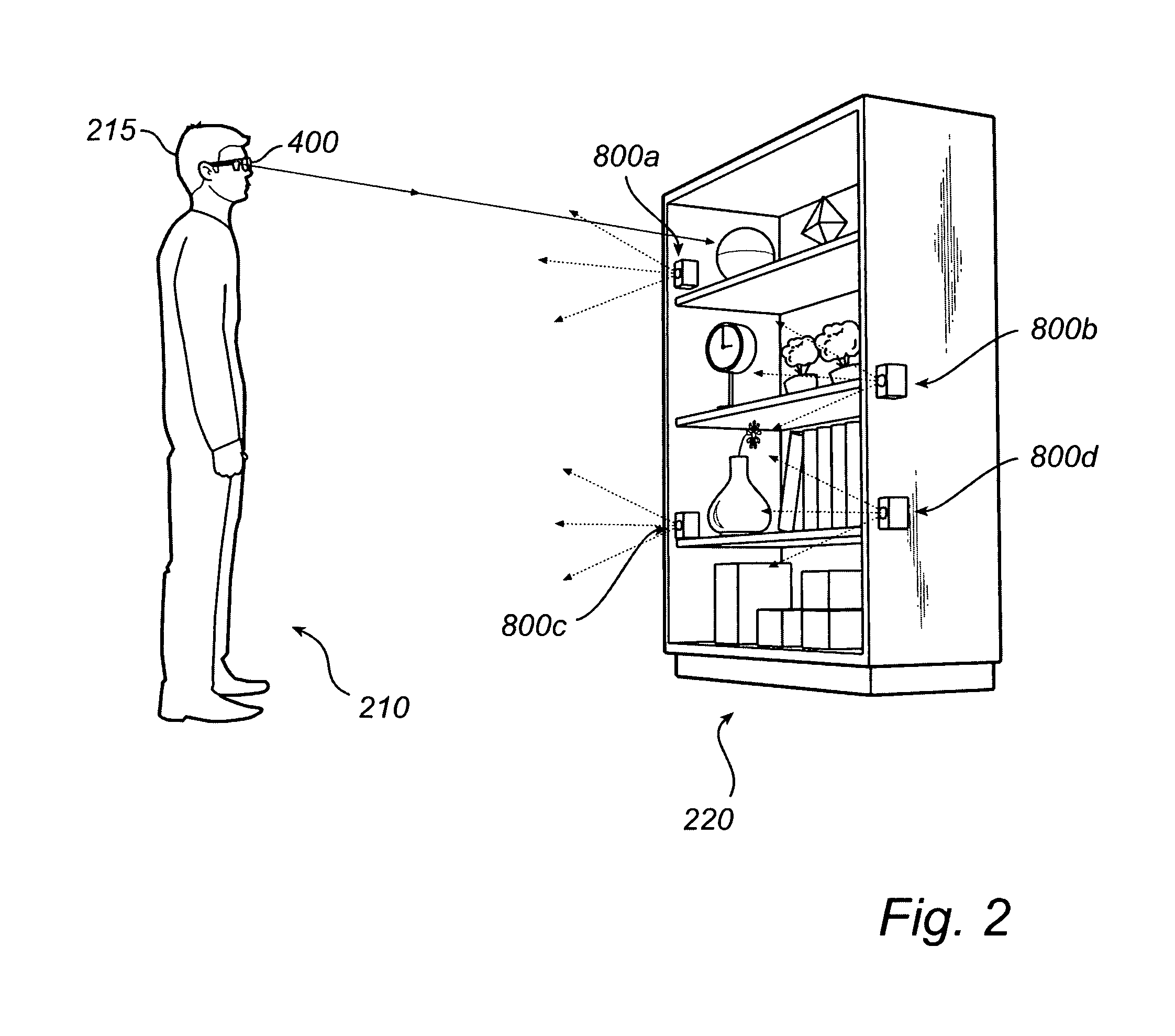Detection of gaze point assisted by optical reference signal
a technology of optical reference signal and detection system, which is applied in the field of human eyetracking devices, can solve the problems of new technological challenges, complicated and fragile devices of available eye trackers, and their operation, and achieve the effects of reducing energy consumption, facilitating deployment, and increasing tim
- Summary
- Abstract
- Description
- Claims
- Application Information
AI Technical Summary
Benefits of technology
Problems solved by technology
Method used
Image
Examples
Embodiment Construction
[0047]With reference generally to FIGS. 1-8, the constituent parts of a gaze-point detection system 100 according to the invention will now be described. As shown in FIG. 1, the system 100 includes a pair of eye glasses 400, two IR signal sources 800 (although the system could have included any number of IR signal sources) and a data processing and storage unit 110. The IR signal sources 800 are adapted to emit IR light which can be received by the eye glasses 400. The eye glasses 400 on their part are operable to communicate (uni- or bidirectionally) with the data processing and storage unit 110.
[0048]FIG. 2 shows the same system 100 applied to an exemplary measurement situation. The eye glasses 400 of FIG. 1 are worn by a person (test subject) 210. The eye glasses 400 are adapted to fit snugly onto the person's 210 head 215, so that little relative movement is possible. If the eye glasses are overly mobile with respect to the head 215 of the person 210, then the accuracy of the ga...
PUM
 Login to View More
Login to View More Abstract
Description
Claims
Application Information
 Login to View More
Login to View More - R&D
- Intellectual Property
- Life Sciences
- Materials
- Tech Scout
- Unparalleled Data Quality
- Higher Quality Content
- 60% Fewer Hallucinations
Browse by: Latest US Patents, China's latest patents, Technical Efficacy Thesaurus, Application Domain, Technology Topic, Popular Technical Reports.
© 2025 PatSnap. All rights reserved.Legal|Privacy policy|Modern Slavery Act Transparency Statement|Sitemap|About US| Contact US: help@patsnap.com



